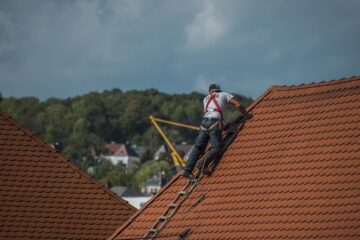Key Takeaways
- Recognize the possible health hazards linked to mold exposure.
- Learn about common signs of mold in your home.
- Discover effective methods for mold remediation and prevention.
- Gain insights from authoritative sources on mold-related issues.
Table of Contents
- Introduction
- Health Risks Associated with Mold Exposure
- Steps for Effective Mold Remediation
- Preventative Measures to Avoid Mold Growth
- The Importance of Professional Mold Remediation Services
Mold is more than just an unsightly nuisance; it can pose serious health risks and cause significant damage to your home. This article aims to educate you on the dangers of mold, the signs that indicate its presence, and the steps you can take for effective mold remediation. Understanding the risks and solutions associated with mold can help you ensure a safer, healthier living environment for your family. Mold can be found everywhere where moisture and organic material are present, making it a common issue in many households and buildings. Mold can grow unseen behind walls, under floors, and attic spaces, making it a silent but dangerous intruder. With the correct information and tools, you can tackle mold problems efficiently and protect your home and health.
Health Risks Associated with Mold Exposure
Mold exposureMold exposure can result in various health issues, from mild allergies to severe respiratory conditions. The CDC states that coughs, sore throats, skin pain, and congestion are being reported. Mold exposure can worsen symptoms and increase the occurrence of asthma attacks in individuals with respiratory conditions. Quick exposure to mold spores can harm health, while extended exposure can lead to worse outcomes. Toxins from molds, known as mycotoxins, can impact immune systems, trigger cancer, and lead to neurological problems. The adverse outcomes are hazardous for children, older people, and people with weakened immune systems.
Steps for Effective Mold Remediation
A streamlined procedure encompassing examination, containment, air filtration, removal, cleaning, and restoration is necessary for effective mold remediation. Mold removal begins by isolating the contaminated region with physical barriers and negative air pressure, allowing experts to find mold in hard-to-see areas. Mold spores are collected and eliminated from the air by specialized equipment such as vacuums and HEPA air scrubbers. To stop further contamination, carefully remove components like drywall and insulation contaminated by mold. Mold spores can be eliminated by treating surfaces with antifungal and antibacterial agents, and non-porous items can be cleaned and disinfected. To return the house to its previous state, replace or repair damaged elements. This may entail rebuilding structures, painting, or refinishing surfaces impacted by mold.
Preventative Measures to Avoid Mold Growth
Maintaining interior humidity levels between 30% and 50%, using dehumidifiers in wet locations, making sure high-moisture areas have adequate ventilation, quickly fixing leaks to minimize moisture buildup, and waterproofing vulnerable areas to prevent water entry during heavy rains or floods are all effective ways to prevent the spread of mold. In high-humidity areas such as laundry rooms, bathrooms, and kitchens, mold can be avoided by keeping the ventilation system in place and addressing any leaks in the walls, ceilings, or plumbing systems. Moreover, open windows and exhaust fans aid with air movement.
The Importance of Professional Mold Remediation Services
While DIY methods can be effective for minor mold problems, larger infestations require professional remediation. Professional services come with expertise, specialized equipment, and safety protocols to handle mold effectively and safely. For instance, licensed professionals can identify hidden molds and ensure comprehensive removal, reducing the risk of recurrence. Professionals follow stringent guidelines to ensure that mold removal is thorough and safe. This prevents the spread of mold and mitigates health risks associated with improper handling. Moreover, they offer insights and preventive measures to avoid future mold growth, making professional services invaluable for long-term solutions. The complexity and potential dangers associated with mold removal highlight the importance of professional remediation.
Stay in touch to get more updates & news on Tribune Tribune!




